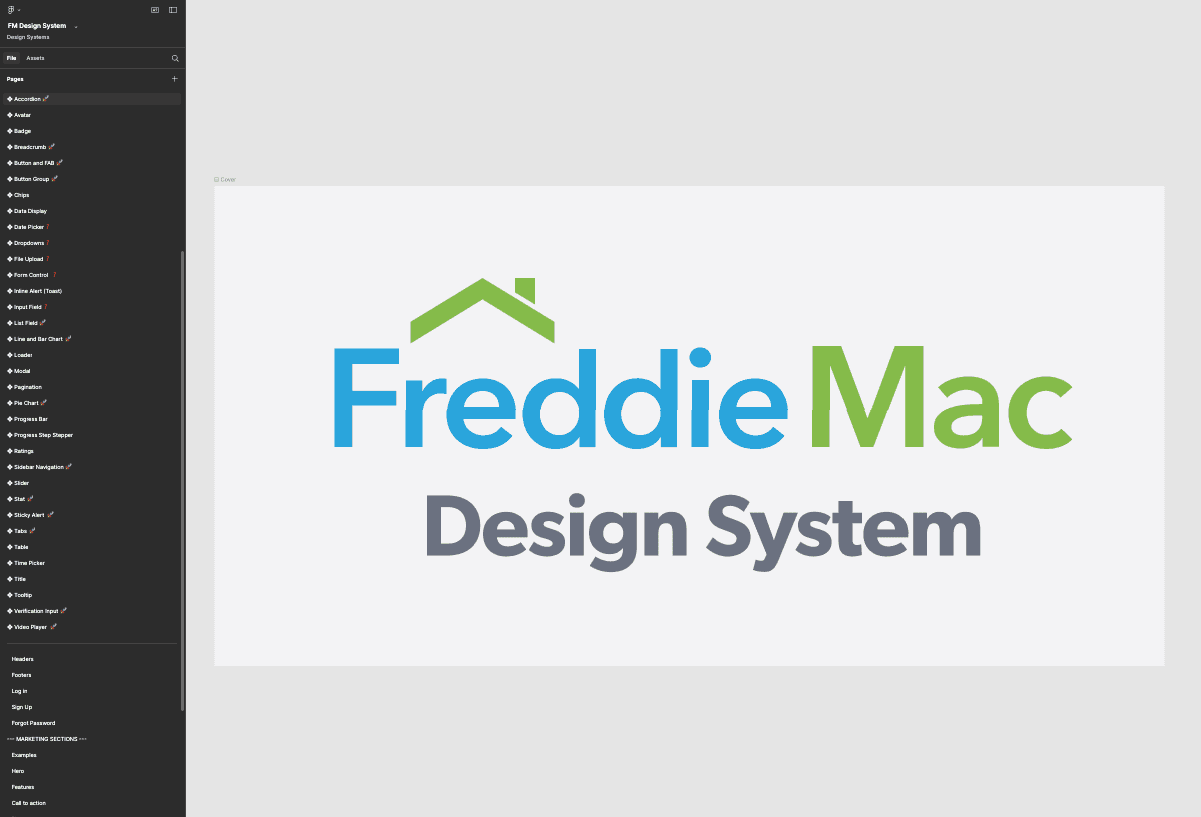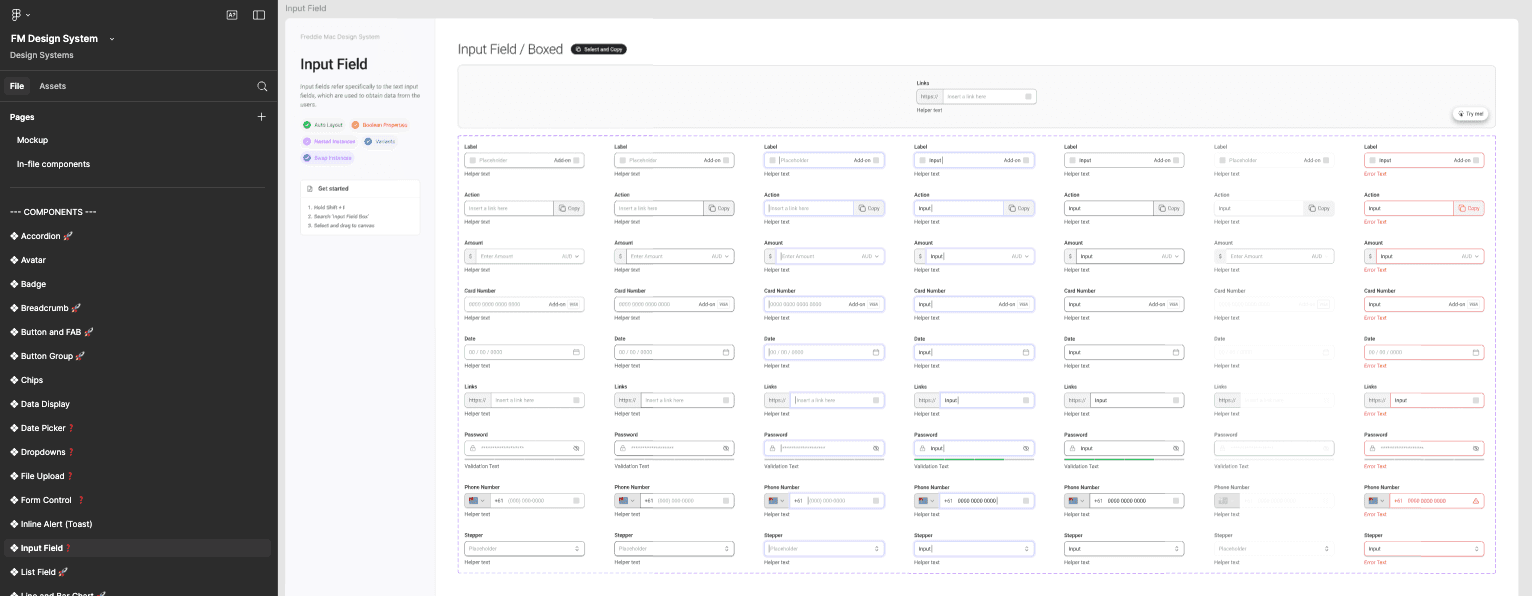Freddie Mac Design System
Oct 21, 2025
Accelerating design, aligning teams, and amplifying brand consistency.
Executive Summary
The Freddie Mac Design System established a unified visual and interaction framework across more than 150 legacy applications, aligning with the new corporate single-family brand identity. Built in Figma with tokenized variables for long-term scalability, the system accelerated design and development velocity while promoting consistency, accessibility, and shared ownership across product teams. Though initial adoption required significant cross-functional buy-in, the ongoing governance model and iterative engagement approach ensured that the system evolved alongside business needs and user expectations.
Background & Challenge
Prior to the design system’s introduction, Freddie Mac’s single-family digital products were fragmented—each with its own look, feel, and interaction model. Over time, this created inefficiencies in development, inconsistency in user experience, and brand fragmentation that hindered the company’s ability to present a cohesive identity to customers, lenders, and partners.
The challenge was twofold:
Unify the digital experience across 150+ legacy applications while accommodating product-specific requirements.
Create a scalable system that could evolve with technology changes and future brand direction.
Approach
The initiative began with a comprehensive research and audit phase, reviewing 150+ legacy products and mapping shared interface patterns. This effort revealed redundancies and inconsistencies that informed a core design language.
Key steps included:
Pattern Development: Creation of 36 foundational design patterns and a library of shared components including headers, footers, login/sign-up screens, and marketing layouts.
Scalable Architecture: Implemented Figma variables and tokens to manage themes, color systems, spacing, and typography across products, enabling flexibility for unique applications.
Governance and Adoption: Established a design system council that met regularly with product teams to review exceptions, approve new variables, and manage contribution workflows.
Brand Alignment: Partnered with marketing and communications to ensure visual and tonal consistency with the evolving Freddie Mac single-family brand identity.
Outcomes & Impact
The Freddie Mac Design System delivered measurable efficiency and consistency benefits:
Accelerated production: Reduced design and development time for new features by up to 50%.
Improved brand consistency: Unified visual language across dozens of products and customer-facing touchpoints.
Enhanced collaboration: Improved alignment between design, engineering, and product through shared tokens and centralized documentation.
Sustained evolution: Ongoing collaboration with application teams resulted in regular updates and community-driven growth of the system.


Lessons Learned
While the system achieved major gains in efficiency and consistency, the largest challenge was organizational alignment. Securing buy-in from multiple product owners and technology teams required a steady focus on showing business value—speed, reusability, and quality improvements—rather than aesthetics alone.
Over time, a shared sense of ownership developed as more teams adopted and contributed to the system, turning it from a design initiative into a cross-functional asset supporting Freddie Mac’s broader digital transformation.
Takeaway
The Freddie Mac Design System exemplifies how deep research, scalable architecture, and a participatory governance model can drive both speed and brand unity across a complex enterprise ecosystem. Its success demonstrates that design systems are not static artifacts, but living frameworks that grow through collaboration, iteration, and trust.
